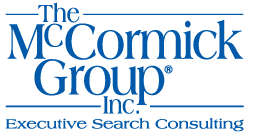
Steve Nelson was quoted in an article written by, Abigail Adcox, reporter at the American Law Media.
As a growing number of large law firms, mostly from New York, adopt policies mandating their lawyers to return to the office four days a week come this fall, the tide has yet to turn in Washington, D.C.
Law firms in D.C.—many of which are operating on a schedule of three days in the office—are likely to face more resistance to in-office mandates, and they could go as far as to use flexible workplace arrangements as leverage to retain and recruit talent, suggested several area recruiters.
“When you couple a city that already had kind of a flexible work environment with all the government attorneys and their experience now over the last three years, I think that it’s going to be very, very difficult for the Washington firms to get people in more than three days a week,” said Jeffrey Lowe, global practice leader at recruiting firm Major, Lindsey & Africa, noting that D.C. law firms could face “strong resistance” to in-office mandates.
However, pressure is building to move to more time in the office.
Lauren Drake, a partner in the Washington, D.C., office of trans-Atlantic legal recruiting firm Macrae, suggested that D.C. firms might feel the same pressures as New York firms.
“New York and D.C. offices tend to be so closely related and linked at the big firms that I find it hard to envision a scenario where New York is in four days a week and D.C. is not,” Drake said.
Drake, who runs a female law firm leaders roundtable in D.C., said there has been more discussion about tying in-office attendance to bonuses, though indicated changes to in-office policies aren’t likely to be revisited until the fall.
Several Am Law 50 firms in New York, including Skadden, Arps, Slate, Meagher & Flom; Davis Polk & Wardwell; and Weil, Gotshal & Manges, and Ropes & Gray are requiring lawyers to be in office four days a week this fall.
All of those firms also have D.C. offices of varying sizes. Ropes & Gray has roughly 100 lawyers at its D.C. outpost, Davis Polk has nearly 50 lawyers in D.C., and Weil has approximately 70 D.C.-based lawyers, according to the firms’ websites, while Skadden has about 200 lawyers in D.C.
Still, most law firms in Washington, D.C., are operating with three days in office, with some firms specifying which days and others not.
For instance, lawyers and directors at Crowell & Moring presently tend to be in-office two to three days a week, with the greatest attendance Tuesday through Thursday, the firm said. Attendance on anchor days ranges from 35% to 55%, as National Law Journal previously reported. Crowell has over 675 lawyers and staff in D.C.
Wiley Rein, which has over 260 attorneys and public policy advisers in Washington, is also operating under a hybrid arrangement, allowing attorneys to work up to 50% of their time remotely.
Arnold & Porter Kaye Scholer is also working on a 50% hybrid policy.
At New York-headquartered law firm Willkie Farr & Gallagher, its lawyers are coming in at least three days a week in D.C., with the set days as Tuesday, Wednesday and Thursday, according to the firm.
Dan Binstock, a recruiter at Garrison & Sisson, said that “historically, the D.C. market has sought to distinguish itself as being slightly more lifestyle friendly,” adding that, though it might be an outdated image, workplace flexibility could be used to recruit talent.
“Certain firms may view this as an arrow in their quiver when trying to distinguish between Wall Street firms, especially as it relates to more junior attorneys who place the most emphasis on this,” Binstock said.
Indeed, law firm culture is a common differentiator in office attendance policies between markets, noted several recruiters.
Steve Nelson, managing principal at recruitment firm The McCormick Group, pointed toward the office attendance standard set by the financial sector in New York.
“In New York, because of this standard set by their clients, the financial industry clients, which have gone back to a heavy in-the-office routine, the New York firms are going to move much more in that direction,” said Nelson. “I think D.C. firms are going to be a little less aggressive about it.”
Similar to the private sector, the federal government has been grappling with getting federal workers back into the office more regularly. Earlier this year, the Biden administration released guidance calling for “substantially” increasing in-office work, though left it up to the agencies and departments to formalize plans.
Referring to New York firms’ in-office mandates, Zeughauser Group Kent Zimmermann said that the ”leadership of many firms in D.C. aspires to move in that direction [of four days], but I think it’ll be easier said than done.”
“There’s a cultural element in some firms that have successfully gotten people back in the office most of the time,” he added.
While return-to-office pressure has been building across the legal industry, regional markets have taken different approaches to attendance mandates, with several West Coast firms expressing a preference for continuing to offer flexible arrangements, according to Law.com reporting
“It [office attendance policies] has the potential to become a very significant differentiator over the next couple of years, depending upon which road the different firms go in terms of mandating office return,” said Lowe, adding that in-office policies may be “one of the more important if not most important issue” for law firm management to deal with over the next several years.

